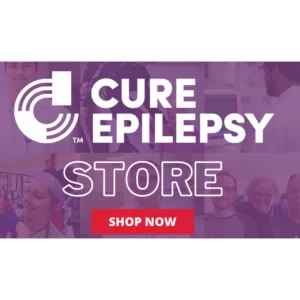This issue of Epilepsy Research News includes summaries of articles on:
- Brain Changes Associated with the Development of Post-Traumatic Epilepsy (PTE)
- A New Brain Circuit Important in Epilepsy
- MicroRNA as a Target to Treat Epilepsy
- Fetal Exposure to Antiseizure Medications and Long-Term Neurodevelopment in Children
Brain Changes Associated with the Development of Post-Traumatic Epilepsy (PTE)
Research from the CURE Epilepsy PTE Initiative team at Virginia Tech has identified several changes in the brain that are associated with the development of PTE after a traumatic brain injury (TBI). The team examined changes in brain activity, cellular changes, and changes in the number of neurons in the brain after the development of PTE. The team found significant cellular and molecular changes in the dentate gyrus of the hippocampus, an area of the brain that has been implicated in seizure development. For example, the team found significant loss of neurons that inhibit brain activity, which may be important because seizures involve too much brain excitation, as well as changes in the structure of astroglia, which are cells that help regulate the transmission of signals between neurons in the brain. These findings suggest that changes in the dentate gyrus may contribute to the development of PTE following TBI.
A New Brain Circuit Important in Epilepsy
Researchers have traced brain lesions (for example those caused by stroke, trauma, and tumors) that are associated with epilepsy to a shared brain circuit, indicating a unique role that deep brain circuits play in the origin and clinical management of epilepsy. The researchers found that lesions associated with epilepsy were connected to a common brain network located deep within the brain in regions called the basal ganglia and cerebellum. The researchers also examined a group of 30 individuals with drug-resistant epilepsy who underwent deep brain stimulation (DBS) to treat seizures and found that the individuals did better if the DBS site was connected to the same brain network implicated for epilepsy caused by brain lesions. The authors conclude that a lesion-related epilepsy network map could help identify patients at risk of epilepsy after a brain lesion and guide brain stimulation therapies.
MicroRNA as a Target to Treat Epilepsy
A recent study featuring the work of former CURE Epilepsy grantee Dr. David Henshall and colleagues investigated the role of the brain molecule micro-ribonucleic acid (miRNA) miR-335-5p as a potential therapeutic target for epilepsy. miRNAs can control levels of voltage-gated sodium channels, which are important in neuronal excitability, making them an attractive target of new treatments. Additionally, voltage-gated sodium channel function is decreased in some forms of epilepsy, like Dravet syndrome. The researchers found that miR-335-5p regulates voltage-gated sodium channels’ levels and neuronal excitability, supporting a role in epilepsy. The researchers concluded that targeting miR-335-5p could potentially lead to new treatments for epilepsy through its ability to influence voltage-gated sodium channels and neuronal excitability.
Fetal Exposure to Antiseizure Medications and Long-Term Neurodevelopment in Children
A new study found that young children who were exposed to commonly prescribed antiseizure medications in utero do not score worse on several long-term neurodevelopmental outcomes (at age three) than children who were not exposed. This study recruited women who were treated for epilepsy at 20 medical centers across the United States and followed them and their babies over the course of pregnancy and several years postpartum. To assess the effects of fetal exposure to medications, children were tested for their vocabulary and verbal comprehension skills at the age of three. Children of women with epilepsy were as good at verbally describing simple objects and pictures as children of women without epilepsy, and their ability to understand language was also comparable. The researchers did find that a high dosage of levetiracetam (Keppra®) in the third trimester of pregnancy was correlated with certain negative neurodevelopmental effects in children and recommend especially careful monitoring of blood levels of this drug and thoughtful dosing strategies.









